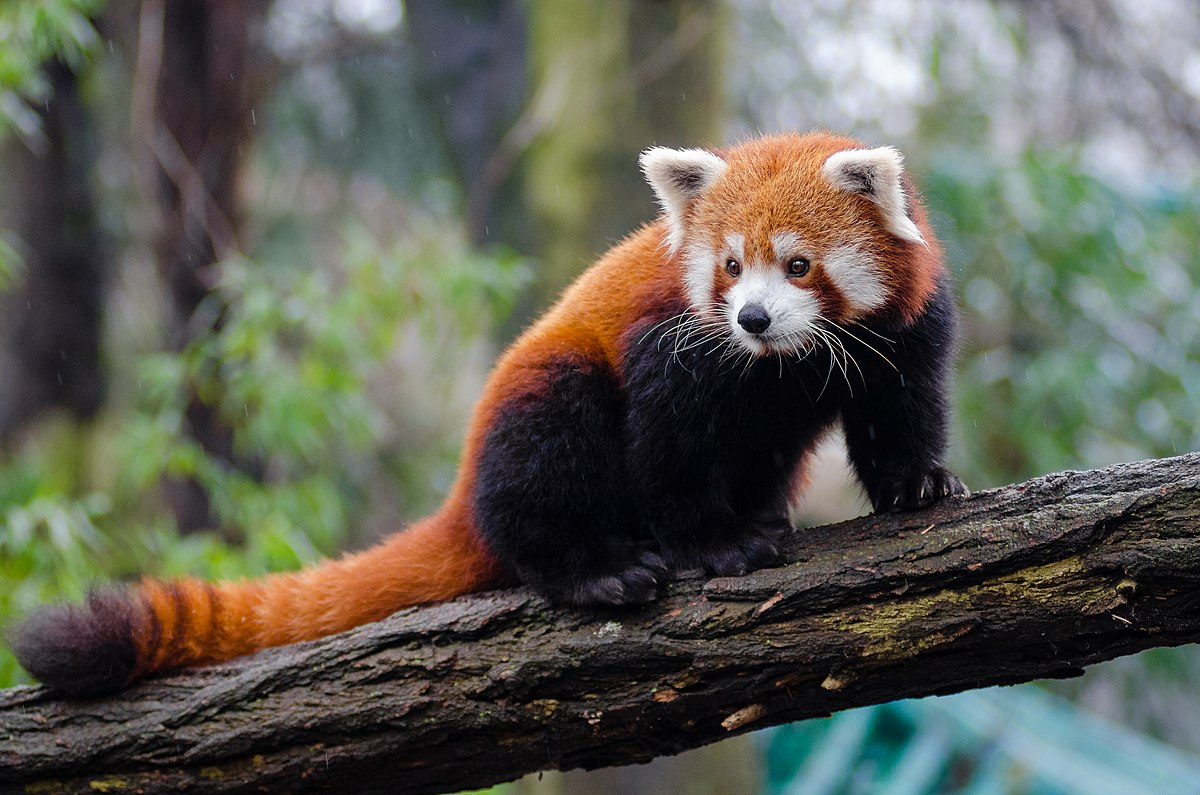Red pandas, scientifically known as Ailurus fulgens, captivate our hearts with their striking reddish-brown fur and charming appearance. Despite their name, these adorable creatures are not closely related to giant pandas. In fact, they belong to their own unique family called Ailuridae. With their endearing looks and resemblance to the iconic Firefox browser's logo, red pandas have earned the nickname "firefoxes." In this article, we will delve into the fascinating world of red pandas, exploring their habitat, behavior, diet, and conservation status.
They are primarily found in the mountainous regions of the Eastern Himalayas, including Nepal, Bhutan, India, Myanmar, and China. They inhabit dense bamboo forests, temperate forests, and mountainous areas at elevations between 2,200 and 4,800 meters (7,200 and 15,700 feet). These regions provide them with the perfect environment to showcase their exceptional climbing and arboreal skills.
They are small to medium-sized mammals, ndasmeasuring about 20 to 26 inches (50 to 65 centimeters) in length, excluding their long, bushy tails, which can add an additional 14 to 18 inches (35 to 45 centimeters). They have a round face with white markings around their eyes, resembling a mask. Their reddish-brown fur helps them blend seamlessly with the surrounding foliage, providing camouflage and protection from predators. Additionally, their semi-retractable claws and strong gripping ability allow them to navigate tree branches with ease.
Behavior and Diet: Red pandas are primarily solitary animals, venturing out at night in search of food. They are skilled climbers and spend a significant portion of their time in trees. Their long, bushy tails provide balance and act as a cozy blanket during cold weather. Red pandas are primarily herbivorous, with bamboo comprising the majority of their diet. However, they are not exclusive bamboo eaters and also consume fruits, berries, leaves, and occasionally insects, eggs, and small mammals. Their specialized wrist bone, known as a pseudo-thumb, helps them grip bamboo shoots and leaves with dexterity.
Conservation Status: Despite their captivating allure, red pandas face numerous threats in the wild, making their conservation a crucial endeavor. Habitat loss due to deforestation, illegal logging, and agriculture expansion poses a significant challenge for these unique creatures. Climate change also disrupts their natural habitat and impacts their primary food source, bamboo. Additionally, poaching for their fur and the illegal pet trade further threaten their survival.
Efforts are being made by conservation organizations, governments, and local communities to protect red pandas and their habitats. Initiatives include establishing protected areas, promoting sustainable land use practices, and raising awareness about the importance of conserving these remarkable animals. Conservation breeding programs in zoos and sanctuaries also contribute to the preservation of the species, ensuring their genetic diversity and potentially facilitating reintroduction into the wild.
Red pandas, the firefoxes of the forest, captivate us with their unique appearance and charming personalities. As a distinct species with their own family, they hold a special place in the animal kingdom. With their natural habitat under threat, it is essential to raise awareness about the conservation of these remarkable creatures. By supporting conservation efforts, we can contribute to preserving their future and ensuring that the enchanting world of red pandas continues to thrive for generations to come.
